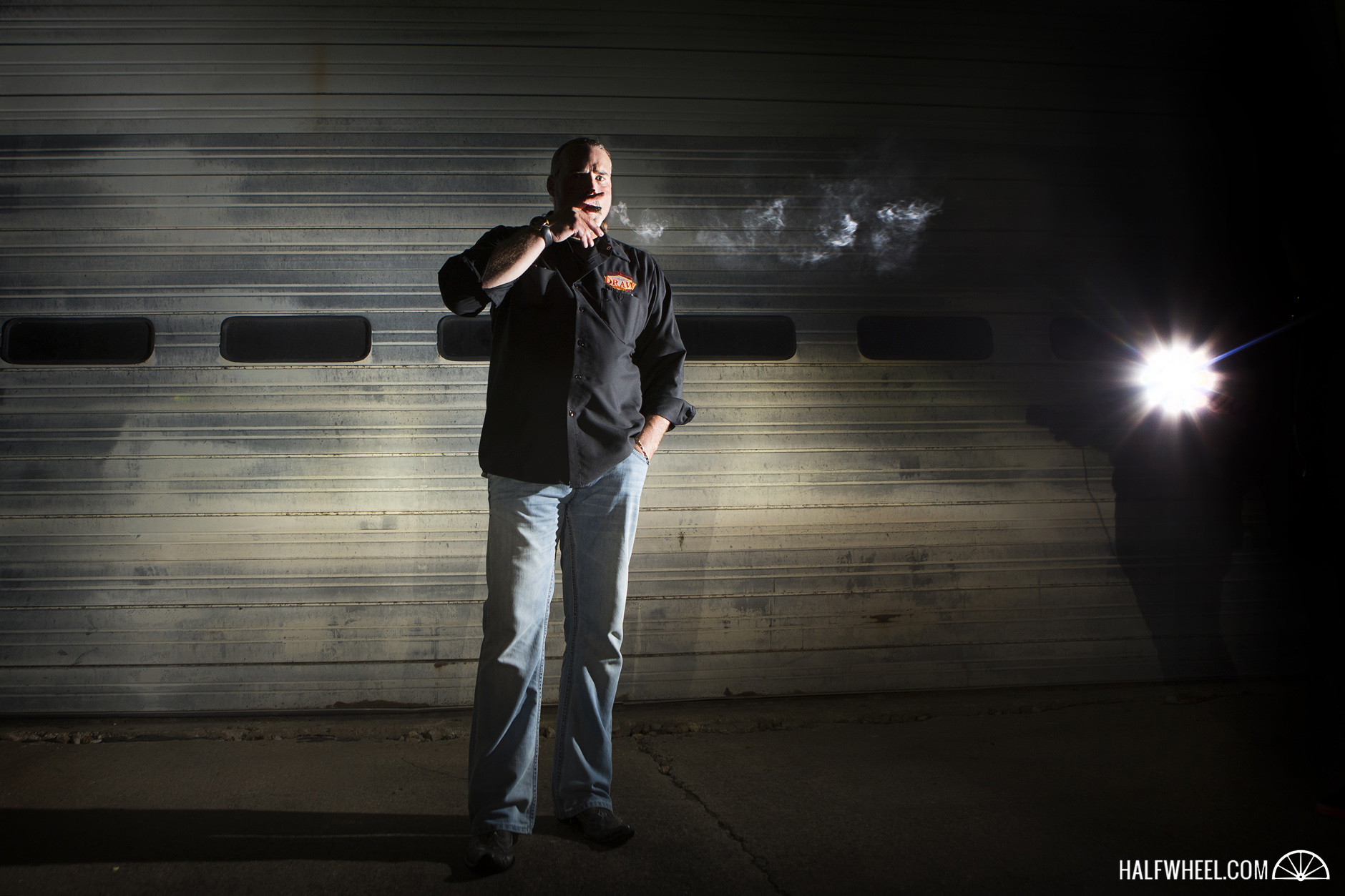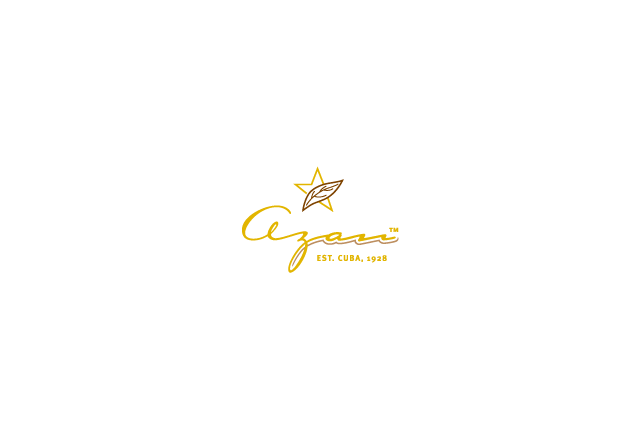Now, I have always enjoyed smoking vintage cigars, if only because I know I am smoking a piece of history. Things were very different back when this cigar came off the machine, and I am always amazed at the quality of the construction.
Robert Burns, along with Muriel and White Owl and others, were known as clear havanas, machine made cigars that used various amounts of Cuban tobacco in their products. Usually, the filler was imported from Havana, the binders usually came from the Connecticut and the wrappers came from Cuba or Sumatra.
One interesting note: the cigars were called clear havanas because customs officials used to sit in the factories and clear the tobacco used in them through customs as it was brought up from the warehouse basement.
The cigars were produced my the hundreds of thousands every year in states like New York, Florida and Pennsylvania, and at their hayday, there were more than ten thousand different brands of Clear Havana cigars, most of varying quality.
Just for comparison’s sake, here is a photograph of the cello the cigar came in, compared to one from this year:
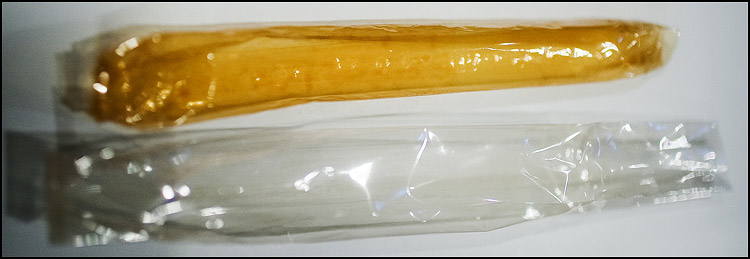
And just for fun, here is a old commercial for the Robert Burns cigar from the 1950s:
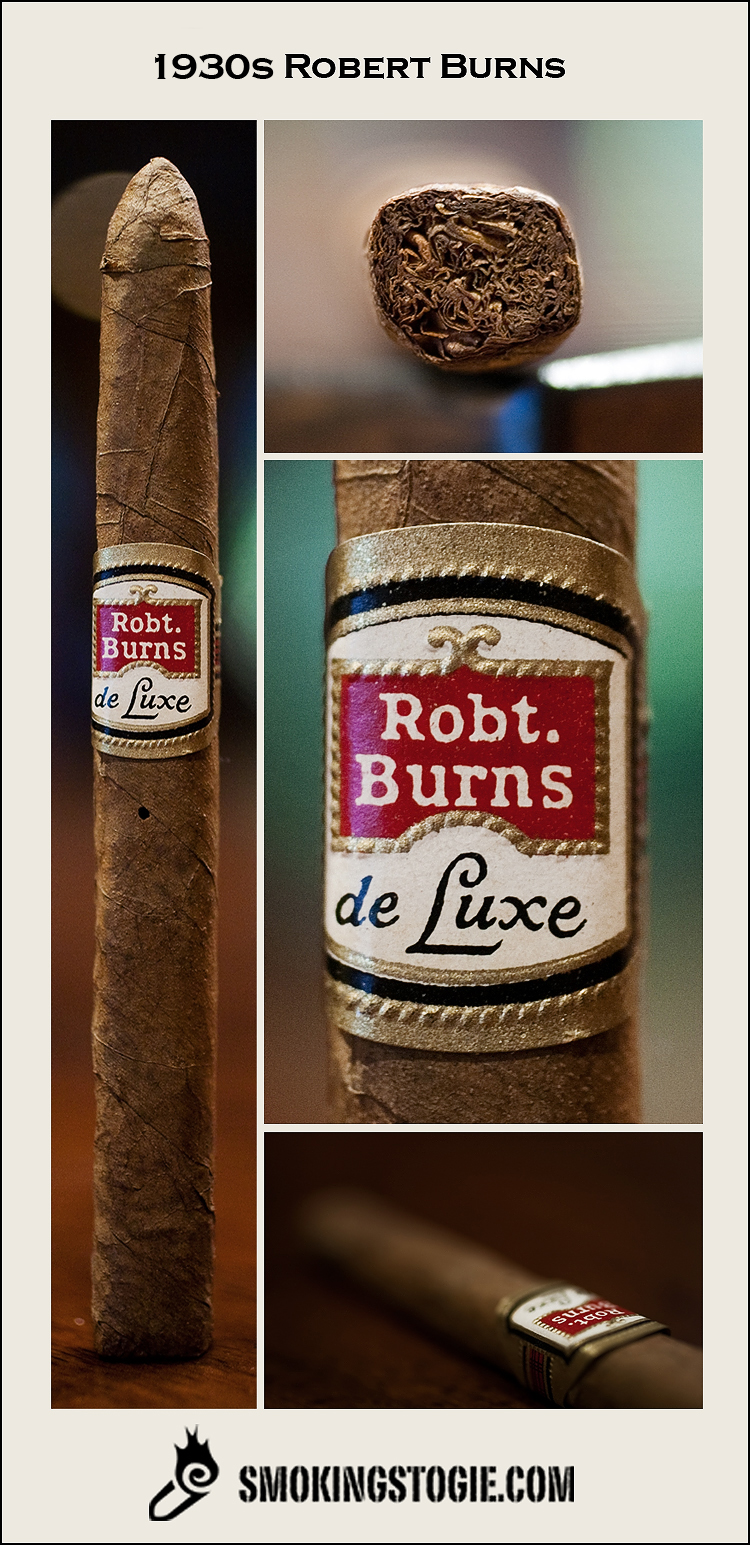
- Cigar Reviewed: Robert Burns
- Country of Origin: USA
- Wrapper: n/a
- Binder: n/a
- Filler: n/a
- Size: 5 1/2 Inches
- Ring Gauge: 42
- Vitola: Perfecto
- Est. Price: $30.00
- Date Produced: 1930s
The first thing I noticed when looking at this cigar was the small hole right dab in the center of the stick. I assume it was a beetle hole, it sure looks like one, but there were no other indications of infestation and that sure was not going to stop me from smoking it.
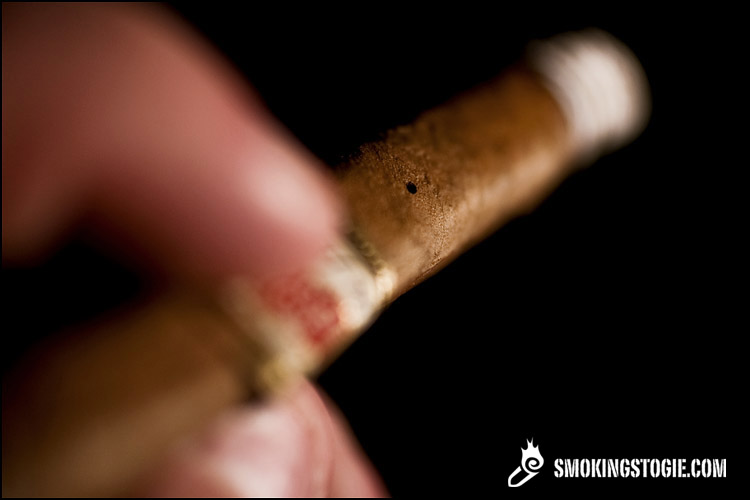
The light brown wrapper itself is quite a bit rougher than the Romeo y Julieta Perfectos. It smelled slightly of tobacco and nothing else and was slightly spongy when squeezed.
The cigar lit very easily, and I did get a bit of pepper at the beginning, followed by a taste of cedar and aged tobacco that remained for the entire first third of the cigar: a very pleasant taste, but not overly noteworthy.
During the second third, I ran into a problem. I assumed the hole in the cigar would give me issues, but I did not realize how bad it would effect the draw of the cigar. When the burn hit about the start of the second third, I was almost unable to get any draw at all out of the cigar until I had the bright Idea to put my finger over the hole when drawing. With that fixed, the stick started drawing like a champ again.
And as an added bonus, when I took my finger away from the hole, the smoke started coming out of that hole only and not off the end of the lit cigar, which made for a pretty kickass photo.
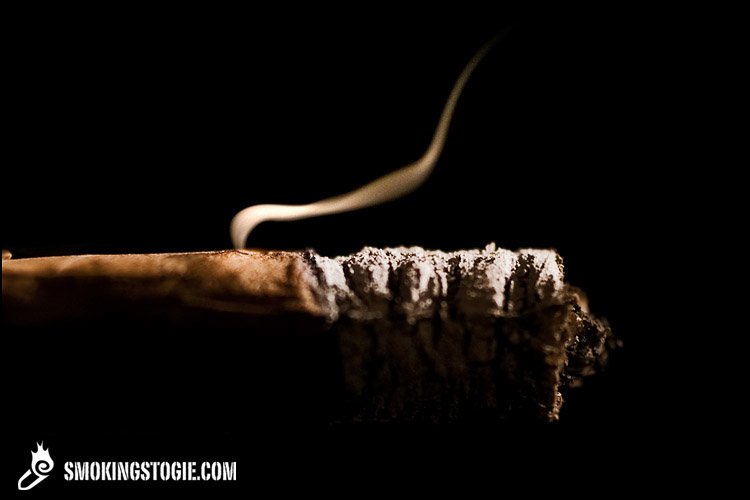
In terms of flavor, the second third was much the same as the first. Cedar was definitely the dominant taste and the pepper that was present in the first third calmed down until it was almost non existent. I was rolling along just great, thinking it would be another boring stick.
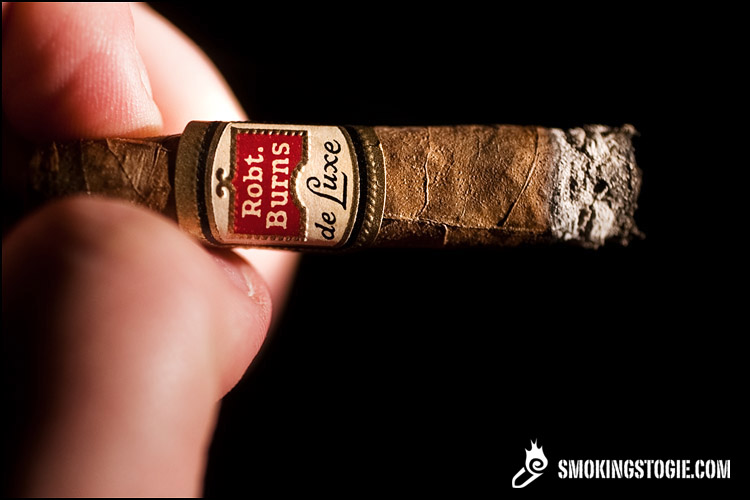
About halfway through the final third, I was blasted by a bomb of spice. I literally sat up in my chair when it happened, it was so out of the blue. It made my mouth tingle and almost overwhelmed any other flavor there was in the stick. The cigar did not get hot at the end, but the spice lasted until I put it down.
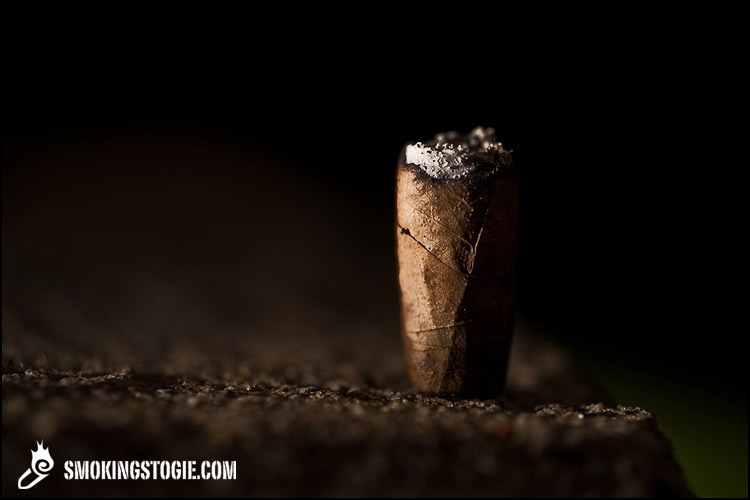
Final Notes:
- The burn on this cigar was great all the way through, and the draw was perfect, so long as I plugged the beetle hole. I was amazed by the quality of the construction of this 80-year-old cigar, which beat out quite a few newer cigars I have smoked.
- I loved the old band, but I am a sucker for such things.
- The final smoking time for this cigar was one hour and 10 minutes, and I was taking my time. I was quite a bit surprised at how slow this stick smoked as well, almost like it was meant to smoke that slow.

